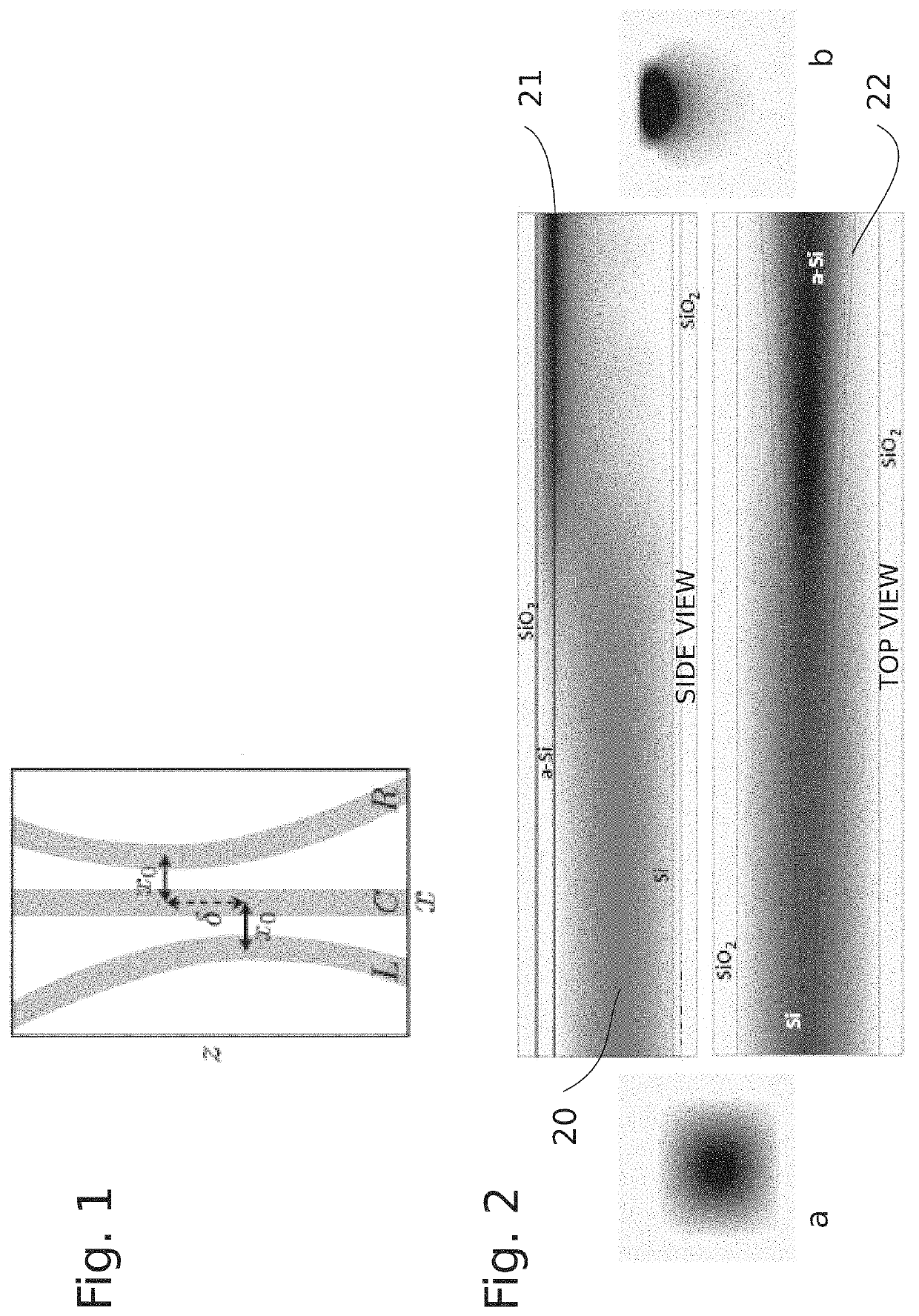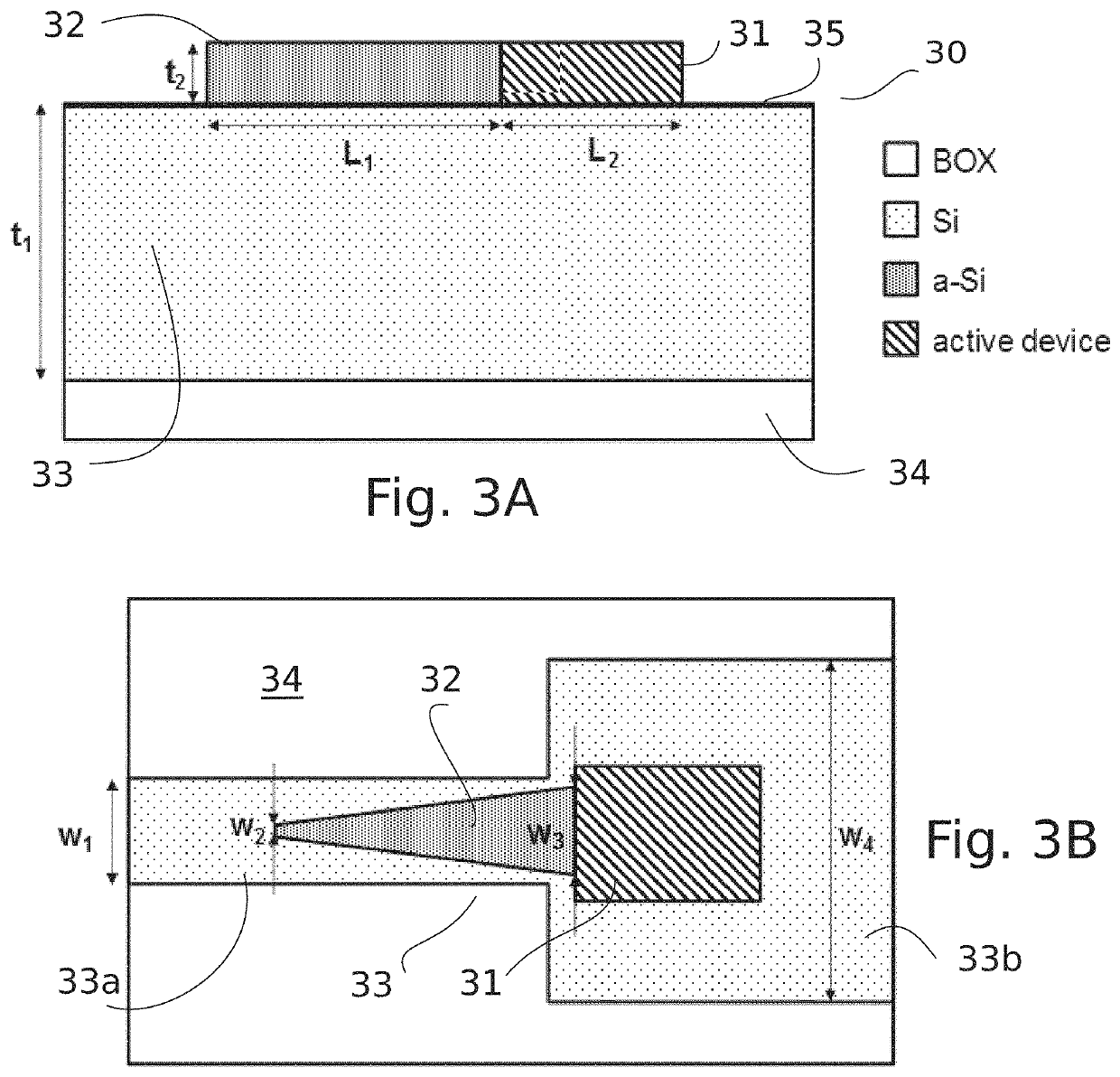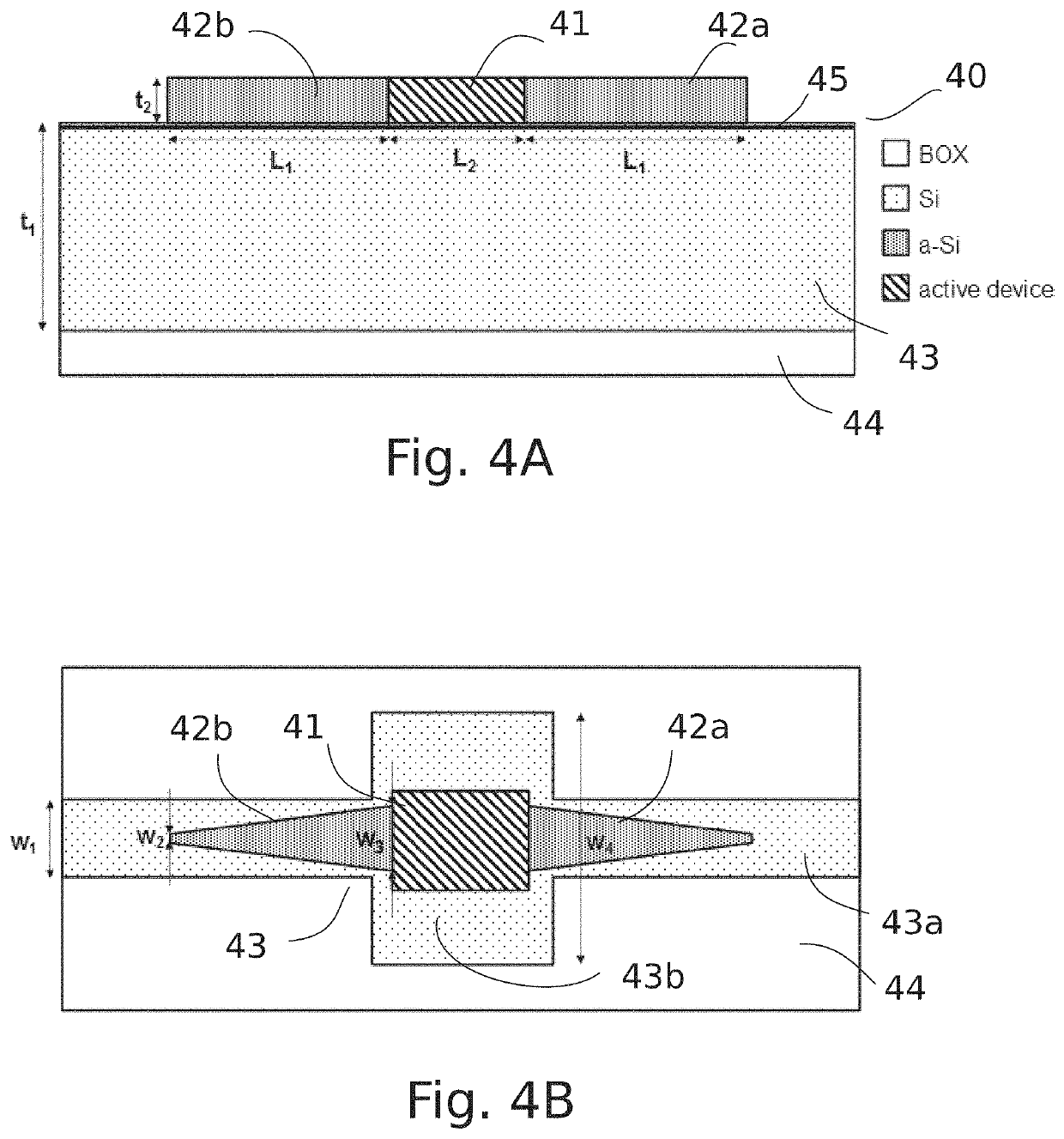Light escalators in optical circuits between thick and thin waveguides
a waveguide and waveguide technology, applied in the field of photonic circuits, can solve the problems of large power consumption, difficult and costly integration with silicon photonics, and large device volume, and achieve the effects of low capacitance of vertical contacts, small detector volume, and high speed
- Summary
- Abstract
- Description
- Claims
- Application Information
AI Technical Summary
Benefits of technology
Problems solved by technology
Method used
Image
Examples
Embodiment Construction
[0062]FIG. 1 illustrate the phenomenon of adiabatic light transfer. In FIG. 1 is shown a schematic top view a system of three waveguides consisting of two circularly bent outermost waveguides L and R, and one straight central waveguide C. The minimum distance between waveguides is given by x0, and the z distance between the centers of the curved waveguides is defined by δ. The radius of curvature of the outermost waveguides L, R may be is 3.5 m, the spatial delay δ=4200 μm, for example, and the minimum separation between waveguides x0=7 μm, for example.
[0063]FIG. 2 shows a side view and a top view of an exemplary inventive waveguide, where a simulation shows how the light is transferred from a lower thick silicon waveguide 20 made of crystalline silicon Si to an upper tapered (22) and thin hydrogenated amorphous silicon (a-Si:H) waveguide 21, with a refractive index higher than that of crystalline silicon. The cross-section “a” to the left further illustrate the light distribution a...
PUM
| Property | Measurement | Unit |
|---|---|---|
| thickness | aaaaa | aaaaa |
| thickness | aaaaa | aaaaa |
| thick | aaaaa | aaaaa |
Abstract
Description
Claims
Application Information
 Login to View More
Login to View More - R&D
- Intellectual Property
- Life Sciences
- Materials
- Tech Scout
- Unparalleled Data Quality
- Higher Quality Content
- 60% Fewer Hallucinations
Browse by: Latest US Patents, China's latest patents, Technical Efficacy Thesaurus, Application Domain, Technology Topic, Popular Technical Reports.
© 2025 PatSnap. All rights reserved.Legal|Privacy policy|Modern Slavery Act Transparency Statement|Sitemap|About US| Contact US: help@patsnap.com



